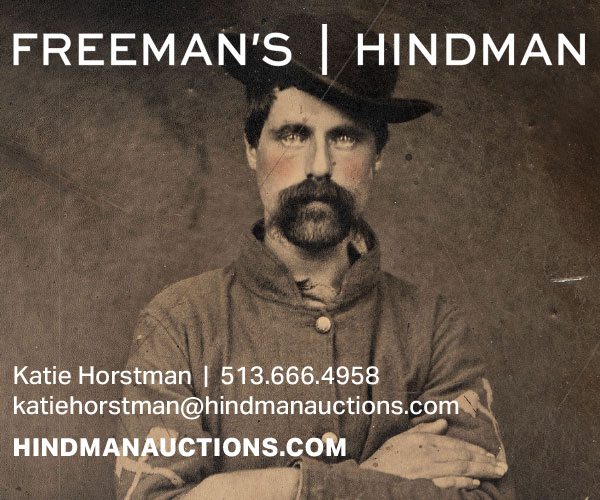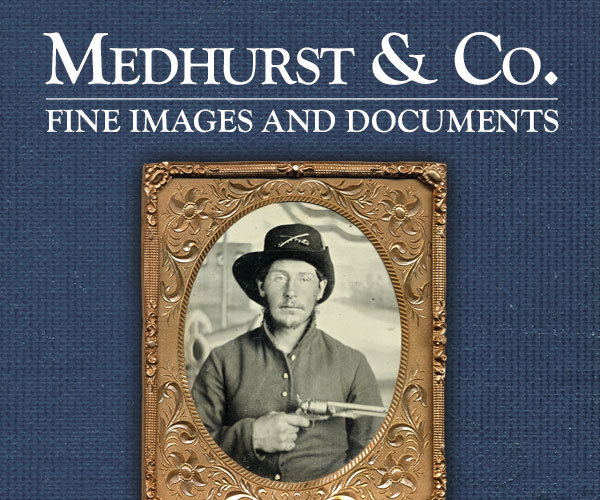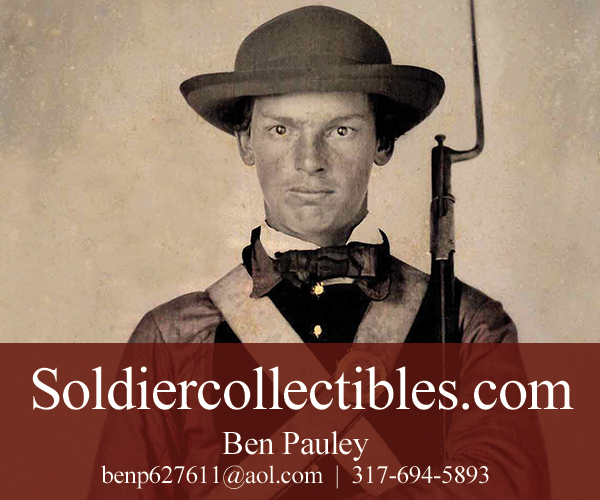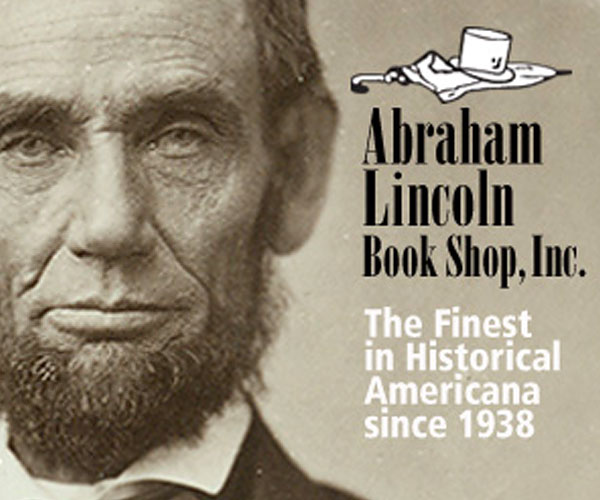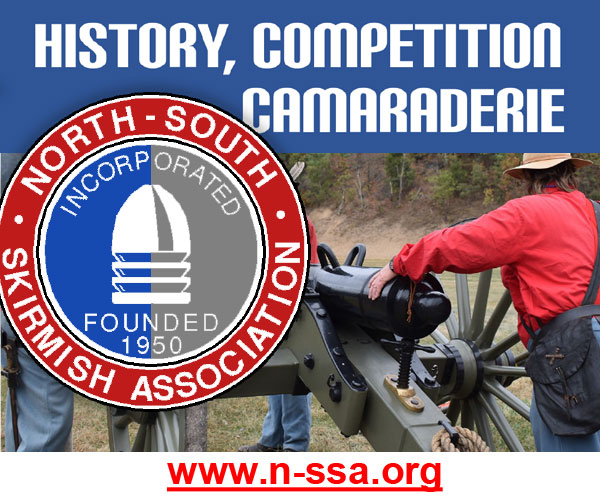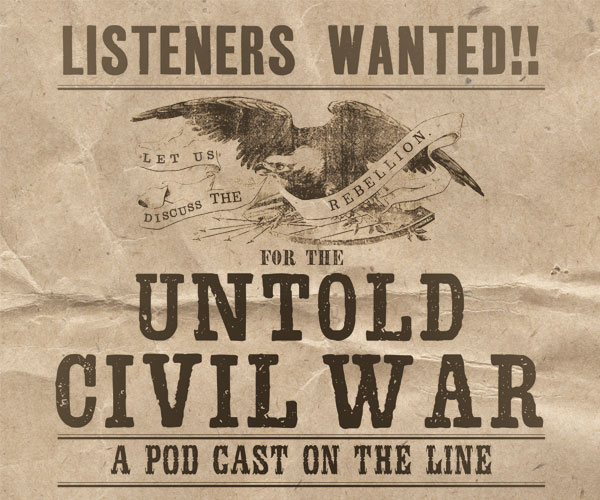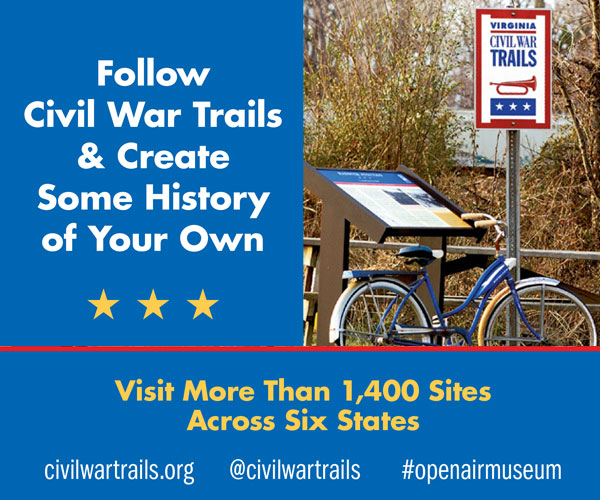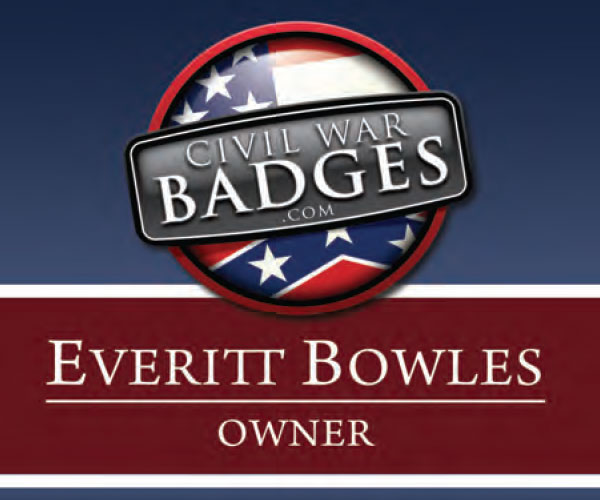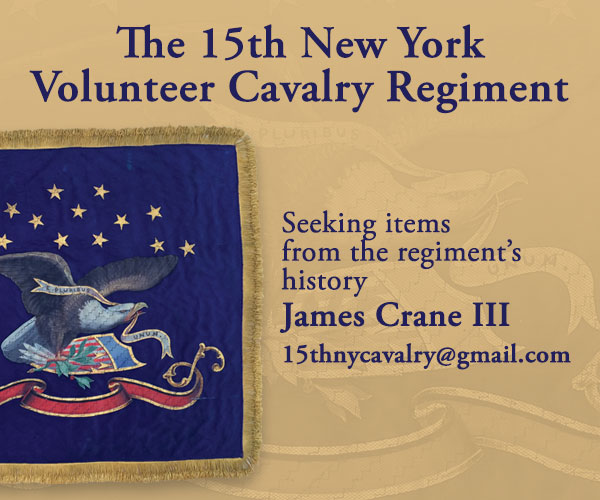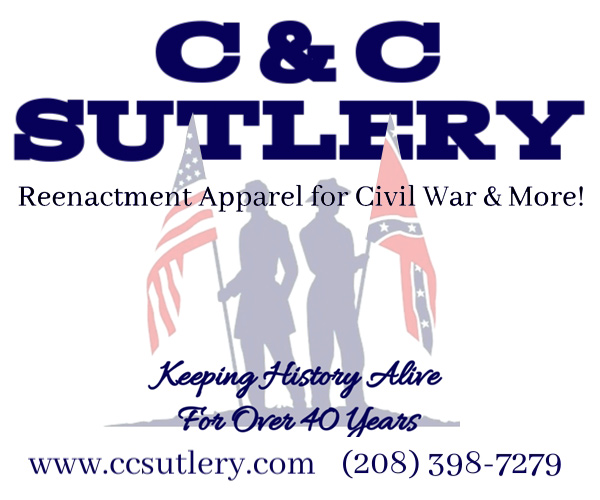The complete issue
Vol. XXIII, No. 6
(40 pages)
Print edition: Visit our store to check availability
Digital edition: Visit JSTOR.org to purchase
Subscribe to MI
Explore the MI Archives: Browse | Advanced search | Tutorial
Inside
Cover image
A photograph from the collection of Richard Tibbals pictures Medal of Honor recipient Lt. Col. Frederick Swift of the 17th Michigan Infantry.
Table of Contents (p. 1)
Mail Call (pp. 2-3)
Feedback includes more praise for the recent Signal Corps issue.
Passing in Review (pp. 4-5)
Seven publications are reviewed, including Military Justice in the Confederate States Armies (White Mane) by Jack A. Bunch, Too Young to Die, Boy Soldiers of the Union Army (Blue Acorn Press) by Dennis M. Keesee, Indiana in the Civil War, Doctors, Hospitals, and Medical Care (Arcadia Publishing) by Nancy Pippen Eckerman, The Bloody 85th: The Letters of Milton McJunkin, a Western Pennsylvania Soldier in the Civil War (Schroeder Publications) edited by Ronn Palm, Richard Sauers and Patrick A. Schroeder, Pickett’s Charge—The Last Attack at Gettysburg (University of North Carolina Press) by Earl J. Hess, Pennsylvania Bucktails, A Photographic Album of the 42nd, 149th, & 150th Pennsylvania Regiments (Schroeder Publications) by Patrick A. Schroeder with images from the Ronn Palm Collection and The Civil War Adventures of a Blockade Runner (Texas A&M University Press) by William Watson.
The Auction Block (p. 6)
A sampling of sales from the popular auction site eBay is included.
‘Gallantry and Intrepidity at the Risk of His Life by John W. Kuhl, Richard Tibbals, David M. Neville and Michael Albanese (pp. 8-12)
Profiles and portraits of representative soldiers awarded the Medal of Honor include James Madison Drake of the 3rd New Jersey Militia and the 9th New Jersey Rifles, William Joyce Sewell of the 5th and 38th New Jersey Infantries, Fredrick W. Swift of the 17th Michigan Infantry, De Witt Clinton Lewis of the 9th and 97th Pennsylvania Infantries, Matthias Walter Day and Robert Temple Emmett of the 9th U.S. Cavalry, Wilber Elliott Wilder of the 4th U.S. Cavalry and Archie A. Peck of the U.S. army.
‘To Die Among Strangers’ (p. 13)
Pvt. David H. Goodhue served in the 6th Massachusetts Infantry. He was mortally wounded while trying to save two wounded comrades. Joseph S.G. Sweatt, who went with Goodhue, later received the Medal of Honor for his courageous act. A portrait of Goodhue illustrates the text.
‘It Was a Pretty Hot Fight’ by Mike Fitzpatrick (pp. 14-16)
John B. Dutton’s 2nd Ohio Cavalry served in five armies in three years and fought from the Indiana Territory to Virginia. A history of the regiment and military service of Dutton is illustrated with his portrait and two others, Capt. Frank Case and his wife, Clara, and Capt. Luman H. Tenney.
WWI Shoulder Patches: A Photo Survey (pp. 17-20)
The modern shoulder patch system began in World War One and has lasted through to the present day. The origins of the patch begin with Civil War hat badges and document the use and purpose of these distinctive items. Diagrams and photographs illustrate the text. Identified portraits include Pvt. and Mrs. Armeau Ferrie of the 81st Division and Stuart J. Snyder.
‘You Have Killed the Best Man in Our Army’ by John Sickles (pp. 21-22)
The shooting of Union Maj. Gen. James B. McPherson is told from the Confederate perspective. The soldier who fired the shot, Cpl. Robert Coleman of Mississippi, was under the command of Capt. Richard Beard of the 5th Confederate Infantry. A portrait of Beard illustrates the story.
The ‘Michigan Fatigue Coat’ by John A. Braden (pp. 23-24)
Michigan troops in late 1861 to early 1862 appear to have received a unique state-issue coat. Portraits of George Newton of the 5th Infantry and Joseph Wilt of the 7th Infantry illustrate the text.
Pennsylvania’s Bucktails: A Photographic Album by Patrick A. Schroeder (pp. 25-31)
Three regiments composed the Keystone State’s famed Bucktails. Surveys of portrait photographs for each regiment follow an introduction. The 42nd Infantry includes William Thomas Blanchard, Thomas Leiper Kane, William Wallace Brown, Roy Stone, Augustus S. Smith, Cyrus B. Lower, John McNeil, Alanson E. Miles. Robert B. Valentine, Thomas J. Thompson and Edwin A. Irvine. The 149th Infantry includes William Behney, George W. Barrett, John A. Early, Asher D. Cole, Edward W. Dimmick, Levi G. Graham, Charles W. Mengel, Charles W. Houd, David Royer, Thomas J. Hulbert and Benjamin H. Warriner. The 150th Infantry includes Horatio Bell, Richard L. Ashurst, Samuel R. Beckworth, Langhorne Wister, Abraham Kuhn, Elias Weidensaul, Frank Zimmerman, Jacob Nees, Charles S. Reisinger and Thomas M. Lyon.
Lyon Almost Loses Missouri for the Union by J. Dale West (pp. 32-34)
Missouri in 1861 reflected a divided country as an aggressive U.S. infantry officer almost lost the state for the Union, both through disregarding the wishes of most Missourians and bad battle planning. This is the story of that officer, Nathaniel Lyon. Portraits of Lyon, Maj. Horace P. Conant and two unidentified armed men illustrate the narrative.
Uniforms & History by Michael J. McAfee (pp. 35-36)
In “The 21st New York Infantry (Or: How to wear an M1855 knapsack),’” McAfee uses a carte de visite believed to be John H. Mills of the 21st New York Infantry to illustrate how soldiers used a rod slid under the blanket straps to relieve stress on the shoulder while carrying knapsacks on the march.
Who Are These Guys? (p. 37)
An occasional column of submitted images includes four Civil War Union photos and a post-war sailor.
Sutler’s Row (pp. 38-39)
The Last Shot (p. 40)
A hard-plate image from the Ronn Palm collection pictures John R. Coates of the 42nd Pennsylvania Infantry holding back a big laugh while the comrade seated next to him has his mouth partly open. Though the subject that drove these two men to laughter is lost to history, a barely visible flask may offer a clue.

